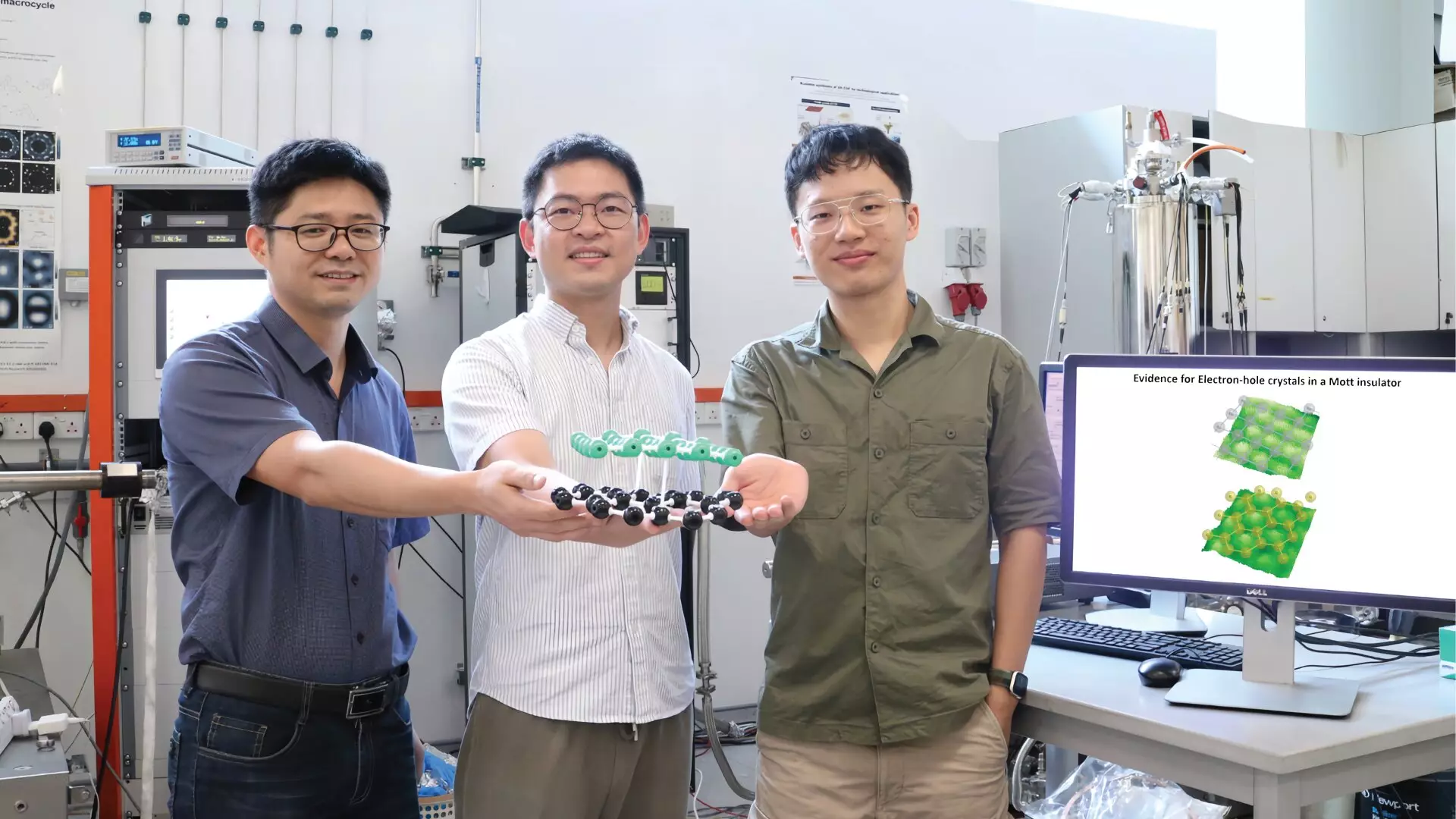In the realm of quantum physics, the behavior of electrons has irrefutably expanded our understanding of materials and their potential applications. When the number of electrons present matches the lattice sites within a material, they engage in a compelling interaction, forming structured arrangements known as electron crystals. This collective behavior of electrons is not merely a curiosity within physics; it serves as a cornerstone for advanced quantum simulations that could revolutionize computing. As researchers delve deeper into the interplay between electrons and their positive counterparts, known as holes, we witness the emergence of exotic quantum states. One of these fascinating phenomena involves counterflow superfluidity, in which electrons and holes flow simultaneously but in opposing directions, exhibiting resistance-free movement indicative of a new frontier in material science and quantum computing.
But therein lies a challenge for physicists—the fleeting nature of electron-hole pairs often results in their rapid recombination, making the stability of these quantum states a precarious endeavor. Traditional methods have attempted to isolate electrons and holes in layered structures, though crucial experiments rarely yield conclusive results in a single natural material. The quest to discover and stabilize electron-hole crystals not only enhances our fundamental understanding but could potentially lead to the technological breakthroughs necessary for practical applications in computing.
A Quantum Leap: NUS’s Groundbreaking Research
The recent findings from a research team at the National University of Singapore (NUS) signify a monumental breakthrough in this field. By crafting and directly visualizing electron-hole crystals within a novel quantum material known as a Mott insulator, composed of Alpha-ruthenium(III) chloride (α-RuCl3), they have opened new avenues for the exploration of quantum excitonic states. This discovery, made under the leadership of Associate Professor Lu Jiong, challenges previously held notions and signals that electron-hole coexistence can indeed be harnessed effectively.
Published in the prestigious journal Nature Materials in June 2024, this research utilized the advanced technique known as scanning tunneling microscopy (STM). While STM is a formidable method for imaging at the atomic level, its limitations usually preclude its use with insulators. The innovative combined setup, involving graphene—an ultra-thin conductive material—has enabled researchers to surmount this hurdle. Graphene not only allows for the conduction of electrons but also facilitates the non-invasive tuning of the Mott insulator beneath it, thus unlocking valuable insights into the relationship between electron-hole pairs.
Revealing Patterns: Understanding the Behavior of Electron-Hole Crystals
The ability to directly visualize electron-hole crystals paves the way for thorough investigation into their structural characteristics and governing principles. The NUS team identified two distinct ordered patterns linked to different energy levels within the α-RuCl3, specifically the lower and upper Hubbard bands. Each of these patterns exhibited unique periodicity and symmetry, further demonstrating the complexity of electron interactions within the material.
Unlike traditional theories that predict uniform charge ordering when doped, the NUS researchers uncovered two simultaneous, distinct orderings. This unexpected outcome speaks volumes about the rich dynamism in the interactions at play when both electrons and holes coexist. As Assoc. Prof. Jiong emphasized, the findings indicate a significant leap in our grasp of Mott insulators: under certain conditions, these structures can harbor intricate configurations of charge that contradict typical expectations.
The Future of Quantum Computing: Possibilities Unfolding
The implications of this research are profound and have immediate applications in the rapidly advancing fields of quantum computing and in-memory computing. With the ability to control electron-hole crystals through tuning, scientists could develop materials that switch states at unprecedented speeds, an essential feature for the next-gen computational hardware. The quest for creating stable and functional electron-hole crystals holds promises not only for performance enhancements in computing but also for offering new platforms to simulate complex quantum phenomena.
The vibrant potential of electron-hole crystals extends beyond the immediate applications; it invites a re-examination of existing material properties and challenges scientists to push the boundaries of what is fundamentally understood about quantum materials. As the NUS team continues to explore the meticulous interplay between electrical signals and these crystals, they are well-positioned to forge pathways to innovative solutions that can radically reshape our interaction with technology.
The collaborative efforts among interdisciplinary teams underscore the importance of innovation in scientific inquiry. Each advancement in visualizing and understanding these quantum states deepens our appreciation for the intricate dance of electrons and holes, offering tantalizing glimpses of a future where quantum technologies redefine computation and simulation.


Leave a Reply